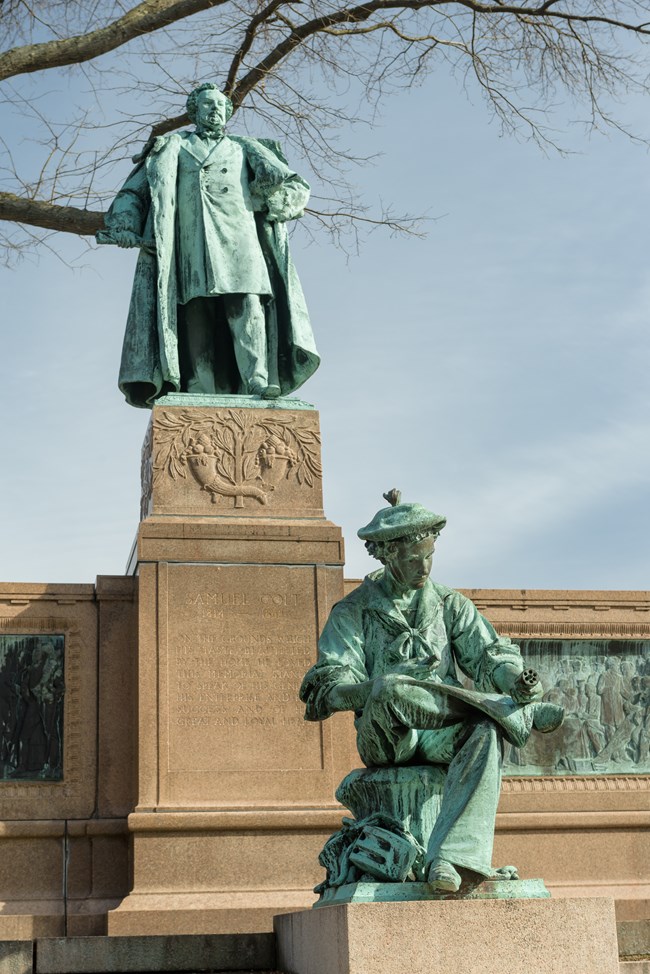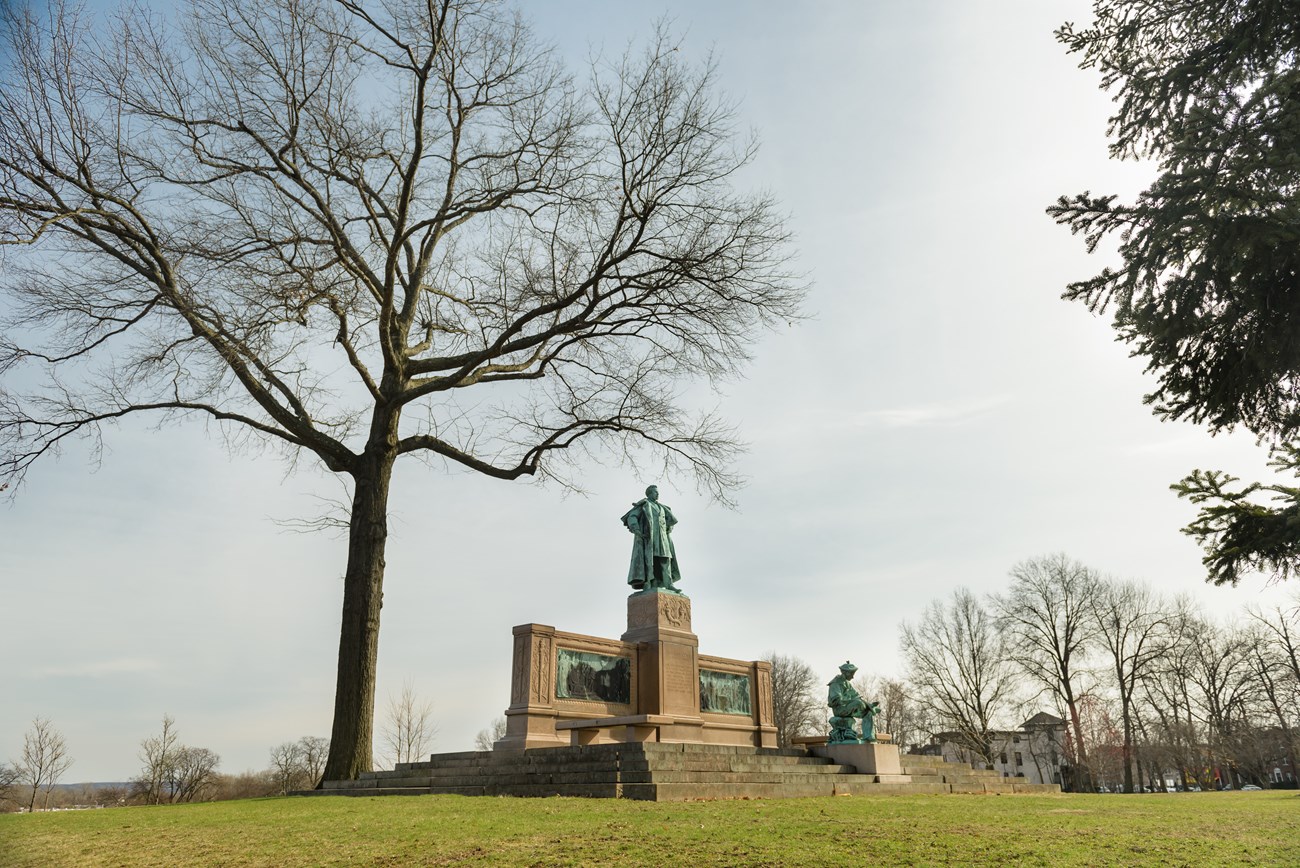|
At the Western Entrance of Colt Park, off Wethersfield Avenue and Morris Street, the Samuel Colt Monument stands as a reminder of Samuel Colt’s legacy. Here, nestled under an oak tree, stands a testament to the man who significantly impacted Hartford and the United States through his technological innovations and the development of an industrial village. After the passing of Samuel Colt in 1862, Elizabeth chose to memorialize him in commissioning the Church of the Good Shepherd. The Church of the Good Shepherd became a lasting testament to the love Elizabeth had for her husband and family, but Elizabeth wanted to memorialize Samuel as an inventor and a man who achieved his dreams. 
Photo Credit: Library of Congress, Prints & Photographs Division/Detroit Publish Company Commissioned by Elizabeth Colt in 1902, the foundation for the Samuel Colt Monument was laid in April 1905 and the memorial was dedicated, in a ceremony, on April 26th, 1906. Elizabeth Hart Jarvis Colt never saw the completed memorial, as she passed in late 1905. The memorial statue was designed by John Massey Rhind, a Scottish sculptor from New York. He designed the Corning Fountain, which was built in memory of Hartford Merchant John B. Corning, in Bushnell Park. Bushnell Park, located in downtown Hartford, was the first municipal park in the nation to be built and paid for by citizens. 
Photo Credit: NPS/Nick Caito The Samuel Colt Monument depicts Samuel at different stages throughout his life, each representing a significant moment chosen by Elizabeth to tell and preserve the legend of her husband. At the base the memorial statue sits a young Samuel whittling a revolver cylinder during his time as a mariner. As a young boy, yearning to explore, he sailed on the Corvo in 1830 for London and Calcutta. It was on this trip that Samuel imagined the concept of a revolving cylinder for a firearm, allowing for multiple shots, by observing the capstan or windlass of the ship. Sitting atop a tier of six granite steps, rising above Colt Park overlooking the entrance, stands the triumphant figure of a man who achieved success. Samuel Colt, a tenacious man with an entrepreneurial spirit, faced numerous struggles in his life, both personal and business related, achieved the success he dreamed of his entire life. Truth or fable? We only know the story that was perpetuated by Samuel and Elizabeth, but it was one that would help Samuel market his revolvers and cement him as a legend in history. 
Photo Credit: NPS/Dani Beekman “The statue, a bronze figure of heroic size, represents Colonel Colt as he looked in the prime of his life, standing on a granite pedestal and wearing the great fur cloak which his old friends remember…”
The Hartford Courant, May 31st, 1905 On either side of the statue base are two reliefs cast in bronze, one refers to Colt’s 1851 tour of Europe where he presented his revolver before the British Institute of Civil Engineers. The other relief depicts Samuel’s meeting Russian Czar Nicholas I. Elizabeth’s dedication to Samuel is located on the back of the statue. She saw her husband as a man who was dedicated to his employees and to the city he called home. “On the ground which his tastes beautified by the home he loved, this memorial stands to speak of his genius, his enterprise and his success of his great and loyal heart.” The memorial represents the man whom Elizabeth loved and, reminds one of the inventive, though at times, controversial man that was Samuel Colt who worked tirelessly to improve the City of Hartford.
The memorial today serves as reminder of Elizabeth Hart Jarvis Colt, the woman behind Samuel Colt. Elizabeth was a prominent member in society who pushed for the betterment of individuals and women. Elizabeth never intended to memorialize herself but rather the people that held significance in her life, Samuel and her children. In coping with her loss, she created lasting contributions to society. “…it would be a memorial not only to Colonel Colt, but also to the lifelong devotion exhibited to his memory by his widow…” Corporation Counsel Arthur L Shipman in The Hartford Courant, April 27th, 1906 Having been exposed to the elements for over one hundred years, the statues and reliefs are now green and blue, the bronze having oxidized. But like the legend of the man they depict, they will remain for eternity to inspire others to achieve their dreams. “…it presents to the eye the figure of the man himself, who, working along the lines of his early imaginings gained for himself honor and prosperity and set forwards the material intents of a great community, the man who gave the example of precision of workmanship and elaboration of detail which is followed in the great workshops of this city only but also of the country and the world…” 
Photo Credit: NPS/Nick Caito |
Last updated: November 8, 2021
